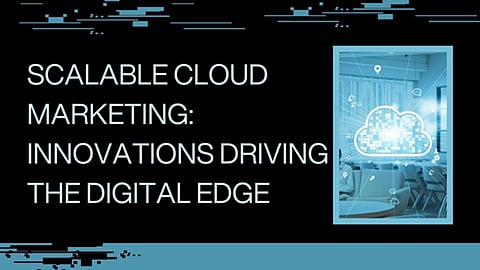

The digital age has fundamentally transformed how businesses approach marketing, and the key to staying ahead lies in the architecture of marketing platforms. This article, penned by Prasenjeet Mahadev Madare, outlines innovative approaches that are reshaping the digital marketing landscape by enhancing scalability, security, and performance.
In today’s marketing world, the ability to scale efficiently has become critical. Platforms need to handle ever-increasing amounts of data while supporting more personalized and real-time interactions with customers. With businesses managing petabytes of data and processing millions of events per second, traditional systems simply cannot keep up. Modern cloud-based marketing platforms are designed to tackle these challenges by embracing cutting-edge technologies and architectural principles that provide flexibility, scalability, and reliability.
One of the most significant innovations in cloud architecture is the adoption of microservices. Unlike traditional monolithic architectures, microservices break down complex marketing functions into smaller, independent services. This modularity allows each service to scale individually, ensuring optimal system performance even during peak demand.”. Microservices also enhance flexibility by allowing development teams to deploy and update parts of the system without disrupting the whole platform.
Containerization has further revolutionized how marketing platforms are developed and deployed. By using containers, marketing platforms can achieve consistent and efficient deployment across various environments, from development to production. This technology encapsulates applications and their dependencies, ensuring that the platform behaves the same way regardless of where it's deployed..
Real-time data processing has become an indispensable part of modern marketing platforms. The ability to respond to customer interactions as they happen allows businesses to deliver highly personalized experiences. Streaming data technologies such as Apache Kafka and Amazon Kinesis have enabled marketing platforms to process millions of events per second with sub-second latency. This capability is vital for real-time personalization, where the customer's behavior dictates the content or offers they receive. For instance, platforms can instantly adjust campaigns based on customer actions or interactions, ensuring that marketing efforts are always relevant and timely.
While real-time data processing is crucial, batch processing still plays a vital role in many marketing operations, particularly those requiring in-depth analysis and large-scale data operations. Many marketing platforms now use a hybrid data processing approach, combining real-time and batch processing to balance performance and cost. Real-time streaming is ideal for customer-facing interactions, such as personalization and conversion optimization, while batch processing is more efficient for backend tasks like audience segmentation and reporting.
Marketing platforms must be able to handle spikes in traffic without sacrificing performance, especially during major marketing events such as product launches or sales campaigns. Load balancing techniques help distribute user requests efficiently across multiple servers, preventing any single server from becoming a bottleneck. Predictive scaling, based on historical data and traffic patterns, ensures that platforms automatically adjust resources before a surge in demand occurs. These optimization techniques ensure a seamless user experience, even when demand peaks dramatically.
Looking ahead, this next wave of innovation will redefine how marketing platform architecture is conceived. Artificial intelligence (AI) and machine learning (ML) will better complement customer personalization and allow analysis and more accurate prediction of customer behavior. Edge computing will allow marketing platforms to process data close to the user, limiting latency and improving performance. Serverless is also emerging as a viable architecture option that can save costs and take away infrastructure management.
Netflix's recommendation engine bifurcates 250 million daily interactions through the use of ML and delivers content tailored in seconds into a user's log-in.
Sephora's Virtual Artist uses the edge to render makeup products instantly on customer selfies, with a 38% conversion.
In 2024, Coca-Cola deployed a serverless marketing platform that scales automatically when spike campaigns reduce cloud costs by 43%, with 2 million concurrent users.
In conclusion, building scalable, cloud-hosted marketing platforms is tremendously complicated yet necessary for businesses wanting to remain competitive in this data-driven world. The weaving of microservices, containerization, real-time data streaming, and hybrid processing will allow today’s marketing platforms to satisfy end-user demands outsized by a fast digital environment. By putting security first and optimizing the platform for performance, companies can develop such platforms that will be strong enough to take on any future growth and innovation. The tenets and practices laid out through this article offer an end-to-end blueprint to tomorrow’s marketing platform architects, ensuring such platforms can deliver a personalized customer experience while simultaneously being operationally efficient and secure. As so aptly put by Prasenjeet Mahadev Madare, those organizations that are willing to adopt these innovations shall be well-positioned to deliver marketing experiences that are truly exceptional and scalable, yet done with agility and efficiency on the much more competitive terrain of the digital marketplace.
